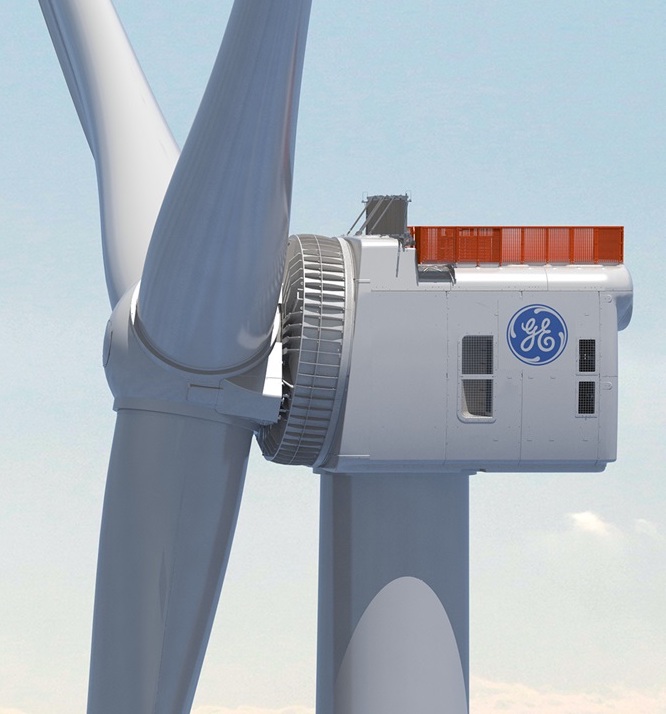Offshore wind has come to America. Now new research funded by the government and led by GE aims to make it grow.
In October, GE Renewable Energy received an order from Vineyard Wind to supply Haliade-X turbines for Vineyard Wind 1, the first utility-scale offshore wind installation in the U.S. The project will be installed 15 miles off the coast of Martha’s Vineyard, Massachusetts, and will feature 62 units of the Haliade-X 13-MW turbine. With energy generation expected to start in 2023, the project is designed to provide cost-competitive electricity for more than 400,000 homes and businesses in the state and is expected to reduce carbon emissions by more than 1.6 million tons per year.
Other large wind farms are expected to follow. Last week, the National Offshore Wind Research & Development Consortium, a nonprofit funded by the U.S. Department of Energy (DOE) and the New York State Energy Research and Development Authority (NYSERDA), selected GE for two research-and-development projects to accelerate the advancement of offshore wind power.
The first award focuses on the joining of large turbine castings. “Developing the capability to produce large castings for offshore wind turbines can help enable and accelerate job growth and create a more robust US supply chain,” GE said in a press release.
The second award will study the use of an autonomous inspection vessel (AIV) for offshore wind turbines. These vessels help monitor fleets of offshore wind turbines across a large region “with minimal to no operational interruption,” according to GE. They would carry camera technology and could be controlled remotely via satellite. This could help reduce inspection costs, minimize turbine downtime, and increase worker safety.
GE designed the Haliade-X to evolve with the market, and evolve it has. The initial model produced 12 megawatts — and even at that level, a single rotation of the machine’s blades could generate enough power for one U.K. household for two days. But when engineers tested a Haliade-X prototype, they found it could be optimized to produce 13 MW; that turbine was selected not only for Vineyard Wind 1 but for the first two phases of the U.K.’s Dogger Bank wind farm. Now an even more powerful version will be rated at 14 MW, and it’s that machine that’s just been selected for Dogger Bank C, the third phase of Dogger Bank. When all three phases are completed in 2026, Dogger Bank is set to be the largest offshore wind installation in the world collectively.
Engineers at GE are also looking to take advantage of the strong winds off North America’s Pacific coast. But there the continental shelf quickly drops off, making stationary turbines a bigger challenge. Last year, designers at GE Research unveiled a proposal for a floating version of the Haliade-X that would use a large platform, not unlike those used in oil drilling, to support the 720-foot-tall turbines.
“We appreciate the support of the National Offshore Wind Research & Development Consortium,” said Christy Guthman, GE Renewable Energy’s North America general manager of sales and commercial operations. “These awards reinforce the critical role that technology innovation will play in tapping the full potential of offshore wind in the U.S.”
Image credit: GE Renewable Energy
